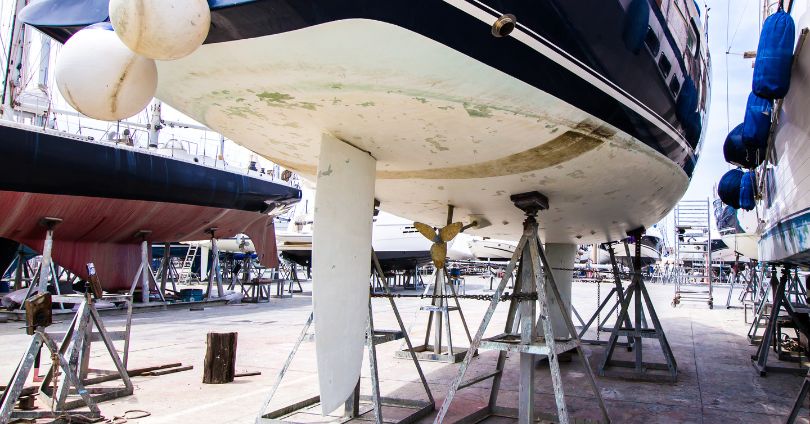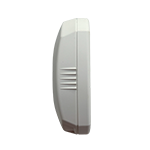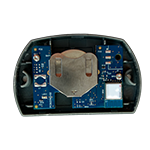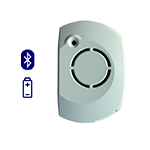Owning a boat is a thrilling experience, offering freedom on the water and countless adventures. However, boat ownership comes with responsibilities, primarily in the form of boat maintenance costs. From the moment you purchase a boat, understanding the associated costs—from routine upkeep to long-term maintenance—is essential for budget planning and ensuring your vessel stays in top condition. Let us guide you through the average boat maintenance costs, the influencing factors, and advice we can give you to minimize costs.
1. What factors influence maintenance costs?
Understanding what drives the cost of maintaining a boat is essential for budgeting and long-term planning. The expenses can vary widely depending on several factors, which can be grouped into three main categories: the boat’s characteristics, its usage and environment, and the approach taken to maintenance.

Factors related to the boat’s characteristics
- Size of the Boat : Larger boats typically require more maintenance due to their increased surface area and complexity. Tasks such as cleaning, painting, and repairing are more labor-intensive and costly for bigger vessels.
- Age of the Boat : Older boats often require more frequent maintenance, as wear and tear affects components such as the hull, engine and electrical systems. Replacing ageing parts can significantly increase costs year after year.
- Manufacturer’s recommendations : Boats designed with specific materials or unique systems may come with manufacturer-recommended maintenance schedules. Following these guidelines often ensures optimal performance but can lead to higher expenses if specialized parts or services are needed. Generally speaking, the more equipment there is on your boat, or the higher the level of equipment, the more recommendations the manufacturer will have for you.
Factors Related to Usage and Environment
- Frequency of use: Boats used more frequently are subject to greater wear and tear, necessitating regular upkeep to keep them seaworthy. Conversely, long periods of inactivity can also lead to issues like engine stagnation and hull fouling. Good to know: if you use your boat regularly, certain maintenance operations, such as cleaning the hull, will require less effort.
- Geographical Location : The environment where the boat is used and stored plays a significant role in maintenance needs. Boats in saltwater conditions are exposed to more corrosive elements, requiring extra attention to prevent rust and other damage. Additionally, extreme weather regions may necessitate seasonal preparation and repair work.
Factors Related to the Maintenance Approach
- DIY vs. Professional Maintenance : Choosing between doing it yourself or hiring professionals can significantly influence costs. DIY maintenance can save money, especially for routine tasks like cleaning or basic motor checks. However, professional services ensure expert handling of complex repairs and may prevent costly mistakes, making them worth the expense in certain situations.
The most practical solution for servicing and maintaining your boat could be Seanapps, with a ready-to-install pack!
2. Different Types of Maintenance
Boat maintenance can be categorized into different types, each addressing specific needs to ensure the vessel remains in excellent condition. These include routine upkeep, seasonal preparations, and specialized tasks to match the boat’s usage cycle.
Routine maintenance
Routine maintenance involves regular tasks aimed at keeping the boat in good working order and preventing minor issues from escalating into major problems.
- Types of routine maintenance: These tasks typically include cleaning the boat, inspecting the engine, checking fluid levels (like oil and coolant), testing navigation systems, and ensuring safety equipment is functional. Regular maintenance also involves monitoring the hull for signs of damage or fouling.
- What routine maintenance can you do yourself? Many routine maintenance activities can be done without professional assistance. Owners can handle tasks such as washing the exterior, lubricating parts, replacing filters, or even performing basic engine checks with the right tools and knowledge.
Seasonal maintenance
Seasonal maintenance is essential to prepare the boat for changing weather conditions and ensure it is ready for use in the next season.
- Winterization: Preparing the boat for winter involves draining water from the engine and plumbing systems to prevent freezing damage, applying antifreeze, and ensuring the boat is securely covered to protect it from harsh weather. This step is especially critical in colder climates.
- Motor maintenance: Seasonal checks of the engine include changing the oil, inspecting belts and hoses, and ensuring the fuel system is clean. These steps help keep the engine reliable and efficient for the next season of use.
- Hull cleaning: Regular hull cleaning is vital, especially at the end of the boating season. Removing barnacles, algae, and other debris prevents long-term damage and improves the boat’s performance by reducing drag. Some owners choose to repaint the hull with anti-fouling paint as part of seasonal upkeep.
Curative and predictive maintenance
- Curative maintenance involves immediate action to repair or replace components when a failure or weakness is detected. This could include fixing a damaged motor, replacing worn-out parts, or addressing structural issues in the hull. While often unavoidable, curative maintenance can be costly and may disrupt planned boating activities, underscoring the importance of proactive care.
- With the development of new technologies such as boat monitoring systems, the notion of preventive maintenance has emerged. Predictive maintenance uses advanced data and monitoring systems to identify potential problems before they lead to breakdown. Tools like Seanapps revolutionise this process by using knowledge of your boat’s usage and manufacturers’ recommendations to alert you before maintenance is required on any part of your boat. Thanks to the maintenance function in the Seanapps app, you’ll receive reminders when your equipment’s maintenance date is approaching. Thanks to Seanapps, connected directly to the professional of your choice for the maintenance of your boat, you can schedule an appointment directly from the application.

Photo of the Seanapps maintenance function
3. Average boat maintenance costs
Boat maintenance costs by boat type
Average maintenance costs for a Rigid Inflatable Boat
| Maintenance | Cost |
| Engine maintenance estimated price | €100–300/year (small outboards are less expensive to service). |
| Hull cleaning estimated price | €50–200 (depending on size and manual cleaning). |
| Anti-fouling estimated price | €200–600/year (small surface areas). |
| Winterization estimated price | €100–300 (basic measures like flushing engines). |
Average maintenance costs for a motor boat
Average maintenance costs for a yacht
| Maintenance | Cost |
|---|---|
| Engine maintenance | €2,000–10,000/year (large engines, often twin engines). |
| Hull cleaning | €1,000–5,000 (larger and more complex surfaces). |
| Anti-fouling | €5,000–15,000/year (large yachts require extensive coatings). |
| Winterization | €2,000–8,000 (more complex systems and size). |
Average maintenance costs for a sailboat
Coût d’entretien moyen d’un catamaran
Average maintenance costs for a houseboat
What are the monthly boat maintenance costs?
For those who want to plan their boat expenses on a monthly basis, here’s a rough estimate based on typical maintenance needs:
| Type of boat | Cost of the monthly maintenance |
| Motor Boat | €100–300/month (oil checks, small repairs, cleaning). |
| Yacht | €300–1,500/month (includes engine checks, cleaning, and minor repairs). |
| Sailboat | €100–500/month (includes sail maintenance, engine upkeep, and minor repairs). |
| Catamaran | €100–400/month (engine maintenance, hull cleaning, minor repairs). |
| Houseboat |
€100–300/month (engine maintenance, cleaning, minor repairs). |
What are the annual boat maintenance costs?
Here is a table summarising these annual costs divided monthly by type of boat:
| Type of Boat | Annual Maintenance Cost |
| Motorboat | €400–1,000/year (includes storage, minor repairs, insurance). |
| Yacht | €10,000–30,000/year (includes storage, crew, insurance, maintenance). |
| Sailboat | €2,000–12,000/year (includes storage, insurance, repairs). |
| Catamaran | €3,000–12,000/year (includes engine maintenance, cleaning, insurance). |
| Houseboat | 2,000–6,000 €/year (includes storage, engine maintenance, insurance). |
Note: the data in our tables are estimates and come from online articles, forums and customer testimonials.
Insurance is included in the costs,if you want to know all about boat insurance, you can read our article !
4. Tips to save on boat maintenance costs
Maintaining a boat can be expensive, but strategic steps can help owners minimize costs while keeping their vessel in top condition. Here are some effective tips for reducing boat maintenance expenses.
- Regular Inspections: Conducting regular inspections is one of the most cost-effective ways to avoid expensive repairs. By identifying small issues early—such as leaks, corrosion, or wear on moving parts—you can address them before they escalate into costly problems. Routine visual checks of the hull, motor, electrical systems, and safety equipment can significantly extend the lifespan of the boat’s components and reduce maintenance costs over time.
- Using a remote control application for your boat: The use of technologies such as remote control applications makes it possible to rationalise servicing and avoid unnecessary expenditure.These apps allow you to monitor your boat’s performance and receive alerts about potential issues. For example, applications like Seanapps provide updates on engine health, battery levels, and maintenance schedules. This proactive monitoring ensures that you stay informed and can address problems early, preventing costly breakdowns or failures.
- DIY Basic Maintenance: Taking on basic tasks yourself is another excellent way to save money. Simple jobs such as cleaning, lubricating moving parts, changing filters, and checking fluid levels are well within reach for most boat owners. Investing in the right tools and learning essential skills not only cuts down on labor costs but also deepens your understanding of your vessel. By reserving professional services for complex repairs, you can allocate your budget more effectively while still ensuring proper care for your boat.
- Bonus : Take a training course to maintain your boat 100% like a professional.
Conclusion
Boat maintenance costs vary widely depending on the type and size of the boat, usage patterns, and location. Whether you’re buying your first boat or a seasoned owner, understanding these expenses and planning ahead is crucial. By leveraging tools, managing expenses effectively, and staying informed, you can ensure your boat remains in great condition—letting you pay more attention to enjoying your adventures and less to unexpected repairs.
Discover Seanapps sensors
Outboard motor anti-theft sensor
79 €
Temperature and humidity sensor
79€
Shore power sensor
149€












0 Comments